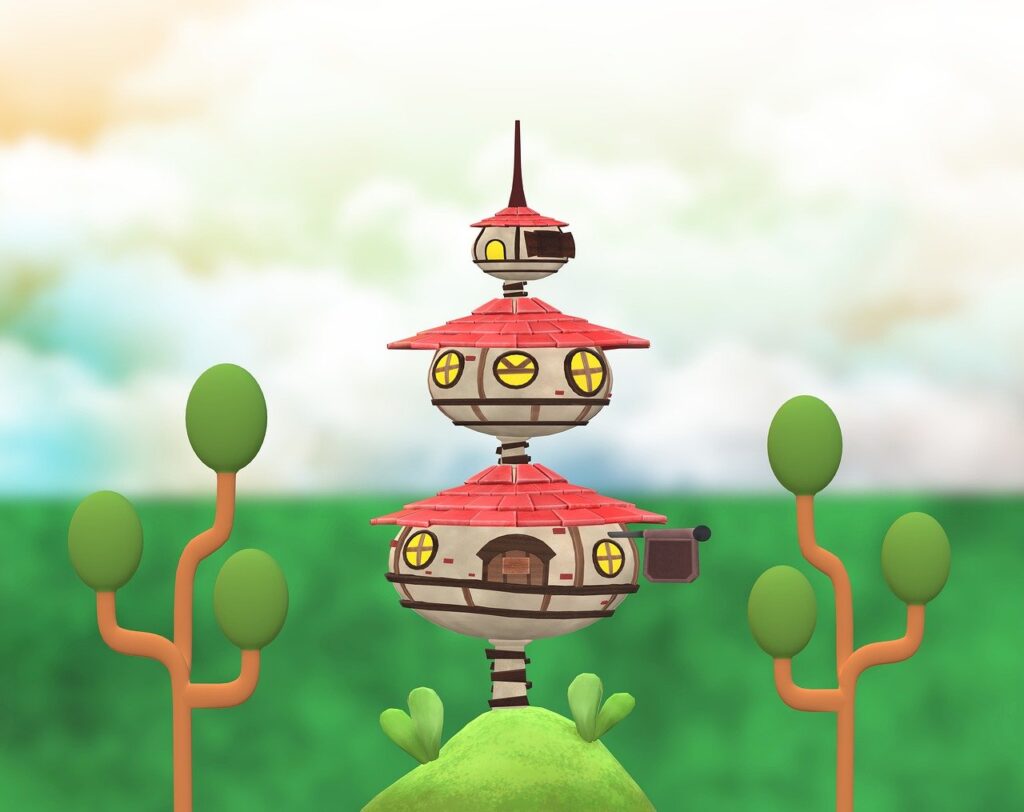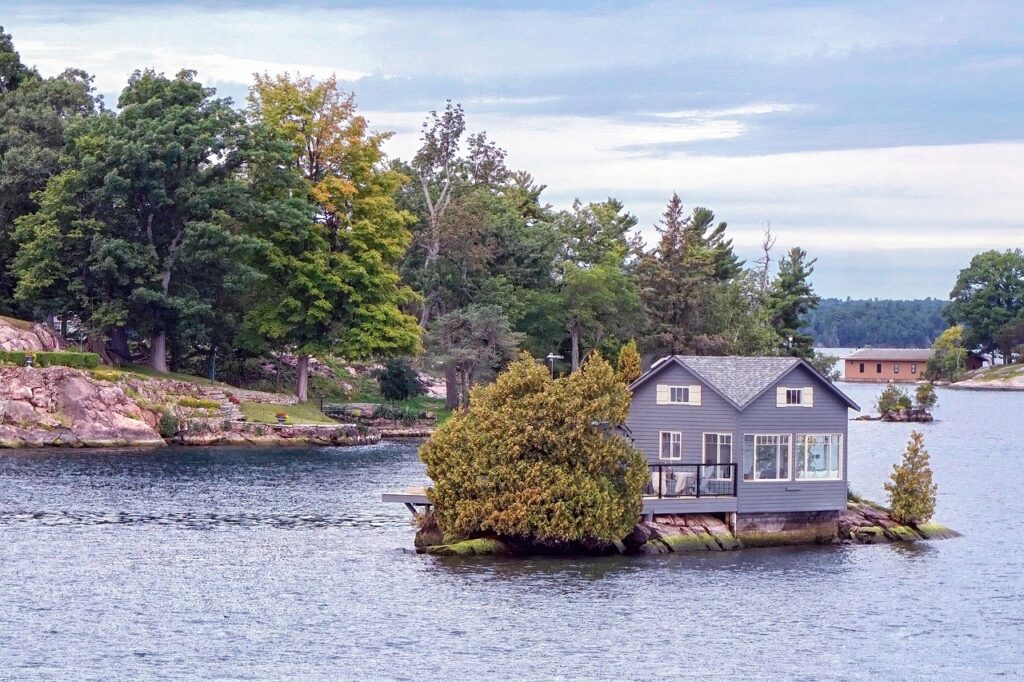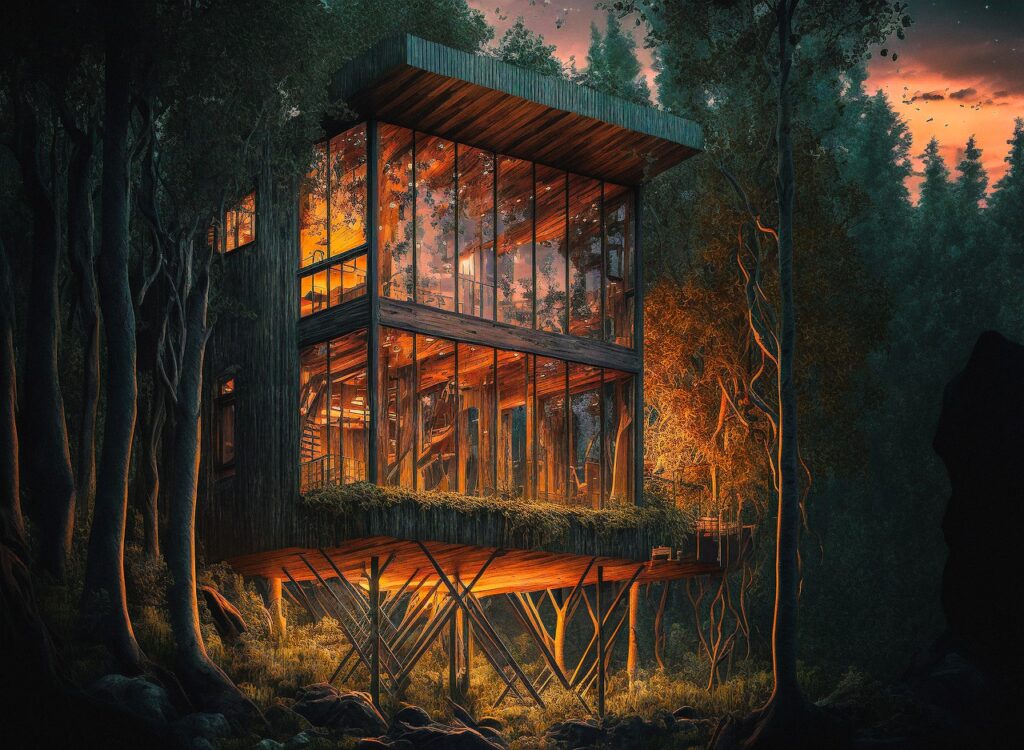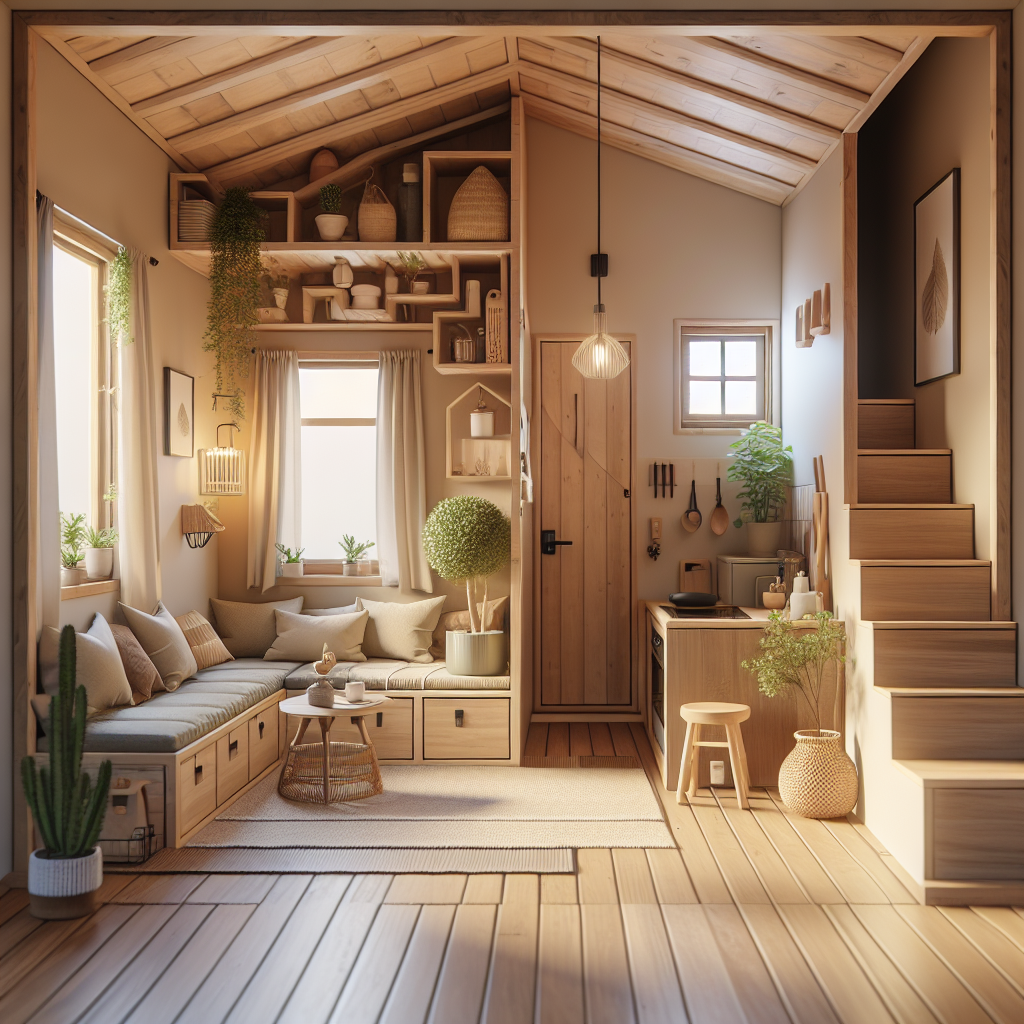Living in a tiny home may seem like a bold move, but it comes with a plethora of benefits that could transform your lifestyle. With limited space, you’ll be forced to declutter and adopt a minimalist approach to your possessions, resulting in a simpler and more organized living environment. Not only will you reduce your carbon footprint by opting for a smaller home, but you’ll also enjoy lower utility bills and maintenance costs. Moreover, the freedom to move your tiny home wherever you desire allows for endless exploration and a closer connection with nature. So, are you ready to embrace the advantages of tiny living?

Affordability
Lower initial cost
One of the major benefits of living in a tiny home is the lower initial cost compared to traditional houses. Tiny homes are typically much smaller in size and require fewer building materials, resulting in lower construction costs. Additionally, the cost of purchasing land for a tiny home is significantly lower than buying a larger property, allowing individuals to enter the housing market at a more affordable price point.
Lower monthly expenses
In addition to the lower initial cost, tiny homes also offer lower monthly expenses. Due to their smaller size, the utility bills for tiny homes are generally much lower than those of larger houses. Heating and cooling a smaller space requires less energy, resulting in reduced electricity and heating bills. Moreover, because tiny homes have limited storage space, it encourages individuals to be more mindful of their consumption habits, leading to reduced spending on unnecessary items.
Reduced maintenance costs
Tiny homes also alleviate the burden of high maintenance costs. With fewer square footage, there is less space to maintain and clean. This means spending less time and money on upkeep, allowing individuals to focus on other priorities rather than constantly maintaining a large property. Additionally, the smaller scale of tiny homes makes repairs and renovations more affordable, making it easier to maintain the home in good condition without breaking the bank.
Sustainability
Minimal environmental impact
Living in a tiny home is an excellent choice for those seeking to minimize their environmental impact. Tiny homes have a significantly smaller footprint compared to traditional houses, which means less land utilization and disturbance of natural habitats. Moreover, the materials used to construct tiny homes can often be sourced from sustainable and eco-friendly options, reducing the overall environmental impact of the building process.
Energy-efficient design
Tiny homes are often designed with energy efficiency in mind. The smaller square footage makes it easier to heat, cool, and light the space, resulting in reduced energy consumption. Additionally, many tiny homes are equipped with energy-efficient appliances and fixtures, further lowering energy usage. This not only helps reduce the homeowner’s carbon footprint but also leads to significant savings on utility bills.
Reduced carbon footprint
By living in a tiny home, individuals can contribute to the reduction of carbon emissions. Due to their smaller size and energy-efficient design, tiny homes require fewer resources and energy to operate, resulting in a lower carbon footprint. Additionally, living in a smaller space often encourages a more minimalist lifestyle, reducing the need for excessive consumption and further decreasing one’s overall impact on the environment.
Mobility
Flexibility to relocate
One of the great advantages of living in a tiny home is the ability to easily relocate. Unlike traditional houses, which are rooted to a specific location, tiny homes can be transported to different sites. This mobility allows individuals to adapt to changing circumstances, whether it’s a new job opportunity in a different city or a desire to explore different areas of the country. With a tiny home, you have the freedom to pick up and move whenever and wherever suits you.
Freedom to travel
Tiny homes provide a unique opportunity for travel enthusiasts to take their home on the road. Many tiny homes are built on wheels, allowing them to be towed and taken on adventures. You can explore different places, experience various landscapes, and immerse yourself in different cultures, all while having the comfort and familiarity of your own cozy space. Living in a tiny home enables you to bring your home with you wherever you go, making travel both comfortable and affordable.
Opportunity for adventure
Living in a tiny home opens the door to endless adventure and exploration. With fewer possessions and less maintenance responsibilities, you have more time and resources to pursue exciting experiences. Whether it’s hiking through national parks, embarking on road trips, or immersing yourself in outdoor activities, tiny homes offer the opportunity to embrace a more adventurous lifestyle. The freedom and flexibility that come with living in a tiny home allow you to fully embrace a life filled with new experiences and unforgettable adventures.
Minimalism
Less clutter and stress
One of the significant benefits of living in a tiny home is the promotion of a minimalist lifestyle. Tiny homes offer limited space, which necessitates downsizing and getting rid of unnecessary belongings. By embracing minimalism, you can free yourself from the burden of excessive possessions and clutter. This reduction in physical clutter leads to a decrease in mental clutter, resulting in less stress and a calmer living environment.
Easier to clean and organize
The smaller size of tiny homes makes cleaning and organizing a breeze. With fewer rooms and less square footage to tackle, it requires significantly less time and effort to maintain cleanliness and order. Cleaning can be done quickly and efficiently, giving you more time to focus on other activities and hobbies. Furthermore, the minimalistic nature of tiny homes encourages efficient storage solutions, enabling you to keep your belongings organized and easily accessible, enhancing the overall functionality of your living space.
Encourages mindful consumption
Living in a tiny home necessitates a shift towards a more mindful approach to consumption. With limited storage space, individuals are encouraged to carefully consider their purchases and focus on acquiring only what is truly necessary. This intentional and mindful consumption not only leads to a reduction in waste but also promotes a more sustainable lifestyle. By living in a tiny home, you have the opportunity to redefine your relationship with material possessions and prioritize experiences and quality over accumulation.
Lower Ecological Footprint
Reduced material usage
Living in a tiny home means using fewer building materials compared to traditional houses. Because of their smaller size, tiny homes require fewer resources in terms of wood, concrete, and other materials. This reduced material usage translates to less deforestation, less industrial production, and a lower overall environmental impact. By choosing a tiny home, you are actively contributing to the conservation of natural resources and minimizing your ecological footprint.
Less energy consumption
Tiny homes are designed to be energy-efficient. With smaller spaces to heat, cool, and illuminate, the energy consumption in a tiny home is significantly lower compared to larger houses. The reduced energy usage not only helps lower utility bills but also decreases the demand on energy production and reduces greenhouse gas emissions. By actively reducing energy consumption through living in a tiny home, you are making a positive impact on the environment and participating in the global effort to combat climate change.
Water and waste conservation
Living in a tiny home also encourages water and waste conservation. With smaller water tanks, individuals become more mindful of their water usage and are motivated to implement water-saving practices. Similarly, the limited space in a tiny home encourages efficient waste management and composting. By adopting sustainable habits within the tiny home lifestyle, such as recycling and composting, you can minimize waste production and contribute to a more sustainable future.

Financial Freedom
Reduced expenses
Living in a tiny home can bring considerable financial freedom. With lower construction and maintenance costs, as well as reduced monthly expenses, individuals can save a significant amount of money compared to traditional house living. The affordable nature of tiny homes allows individuals to allocate their financial resources towards other goals, such as paying off debt, saving for retirement, or pursuing passions and hobbies. By embracing the tiny home lifestyle, you can achieve a greater level of financial freedom and security.
Freedom from mortgage
One of the most appealing aspects of living in a tiny home is the freedom from a mortgage. With lower construction costs and the potential to purchase land at a more affordable price, individuals can often afford to pay for their tiny home outright, eliminating the need for a mortgage. By removing this major financial burden, living in a tiny home allows for more financial flexibility, reduced stress, and the opportunity to live a debt-free life.
Opportunity for debt-free living
Living in a tiny home provides an opportunity for debt-free living. With lower expenses and the potential to eliminate a mortgage, individuals can focus on paying off existing debt and avoiding new financial obligations. This debt-free lifestyle allows for greater peace of mind, reduced financial stress, and the ability to allocate resources towards personal goals and aspirations. By embracing the simplicity and affordability of a tiny home, you can take control of your financial future and achieve a greater level of economic independence.
Customization & Creativity
Personalized design options
One of the exciting aspects of living in a tiny home is the ability to personalize the design according to your preferences and needs. Tiny homes can be customized to reflect your unique style and cater to your specific requirements. From choosing the layout and materials to incorporating innovative storage solutions and creative architectural designs, you have the freedom to create a space that is truly your own. This level of customization allows for an intimate and comfortable living environment that perfectly suits your lifestyle.
Maximizing storage space
Tiny homes excel at maximizing storage space through clever design strategies. From utilizing hidden compartments and multi-functional furniture to implementing inventive storage solutions, tiny homes offer ample opportunities to optimize every square inch of space. This focus on storage efficiency allows you to keep your belongings organized and easily accessible, ensuring that you make the most of limited square footage. With a well-designed tiny home, you can enjoy both functionality and comfort without compromising on style or aesthetics.
Unique architectural innovation
Tiny homes provide a platform for unique architectural innovation and creativity. With fewer constraints in terms of size and regulations, tiny home builders and owners have the freedom to think outside the box and explore unconventional design ideas. This architectural creativity results in unique and visually stunning structures that not only capture attention but also inspire others. By living in a tiny home, you become part of a community that values innovation and originality, contributing to a rich and diverse architectural landscape.

Community & Connections
Stronger relationships with neighbors
Living in a tiny home can foster stronger relationships with neighbors and promote a sense of community. The small size of tiny home communities encourages social interactions and creates opportunities for genuine connections. Residents often share common spaces and amenities, leading to increased opportunities for socializing, collaboration, and mutual support. The close proximity and shared experiences within tiny home communities can lead to lasting friendships and a heightened sense of belonging.
Shared spaces and resources
Tiny home communities often feature shared spaces and resources, further enhancing the sense of community. Community gardens, common recreational areas, and shared workshops are just a few examples of the shared amenities that can be found in tiny home communities. These shared spaces promote collaboration, cooperation, and a sense of belonging, as residents come together to create a vibrant and supportive living environment. By embracing communal living, individuals can enjoy the benefits of shared resources and the opportunity to build meaningful connections with like-minded individuals.
Opportunities for communal living
Living in a tiny home offers opportunities for communal living and a more collective lifestyle. Tiny home communities often prioritize sustainable lifestyles, shared values, and a sense of belonging. By living in a smaller space and participating in a community-centered environment, you can benefit from the collective wisdom, shared experiences, and support systems that come with communal living. Whether it’s participating in community events or joining in communal projects, living in a tiny home provides numerous opportunities for building relationships and making a positive impact within a community.
Flexibility to Downsize
Adaptable to changing needs
One of the advantages of living in a tiny home is its adaptability to changing needs. As life circumstances change, such as children moving out or retirement, the need for a large living space may decrease. Tiny homes offer the flexibility to downsize and adjust your living arrangements to better suit your current situation. By embracing the tiny home lifestyle, you can live more comfortably within a smaller space, while also having the freedom to adapt and modify your living environment as your needs evolve.
Freedom to simplify lifestyle
Living in a tiny home provides the freedom to simplify your lifestyle. By downsizing and minimizing possessions, individuals can break free from the consumer-driven culture that often brings clutter and stress. Embracing a simpler lifestyle allows space for greater focus on experiences and relationships, leading to increased overall satisfaction and contentment. The simplicity of tiny home living encourages mindfulness and intentional living, allowing individuals to prioritize what truly matters to them.
Embracing a smaller living space
Living in a tiny home means embracing a smaller living space, and this can have its advantages. A smaller living space can feel cozy and inviting, promoting a sense of warmth and intimacy. Additionally, a smaller space requires less time and effort to maintain, allowing you to focus on activities and pursuits that bring you joy. By embracing a smaller living space, you can discover the freedom and contentment that comes with having just enough, rather than being burdened by an excess of material possessions.

Improved Quality of Life
Less clutter and distractions
Living in a tiny home can greatly improve the quality of your life by reducing clutter and distractions. With limited space, you are forced to be selective about your belongings, which in turn leads to a decluttered and organized living environment. This physical simplicity translates into mental clarity, allowing you to focus on what truly matters and eliminate unnecessary distractions. By living in a tiny home, you can create a peaceful and harmonious living space that promotes relaxation, productivity, and overall well-being.
Closer connection to nature
Tiny homes often offer the opportunity to be closer to nature. Whether it’s through their location in rural or natural settings or their inclusion of large windows and outdoor living spaces, tiny homes allow individuals to feel in tune with the natural world. The proximity to nature can bring a sense of tranquility, improved mental health, and a greater appreciation for the environment. Living in a tiny home enables you to enjoy the beauty and serenity of nature right on your doorstep.
Enhanced mental well-being
Living in a tiny home can have a positive impact on your mental well-being. The simplicity and minimalism of tiny homes alleviate stress and promote a greater sense of peace and tranquility. The reduced financial burden, the removal of clutter, and the opportunity to focus on experiences and connections all contribute to improved mental well-being. By embracing the tiny home lifestyle, you can create a nurturing and supportive living environment that enhances your overall happiness and contentment.
In conclusion, living in a tiny home offers a multitude of benefits across various aspects of life. From affordability and sustainability to mobility and improved quality of life, the advantages of tiny home living are numerous. Whether it’s the financial freedom, reduced ecological footprint, or the opportunities for creativity and community, tiny homes provide a unique and fulfilling way of living. By embracing the simplicity, functionality, and connection to nature that tiny homes offer, individuals can find greater harmony, contentment, and a newfound sense of freedom in their lives.

